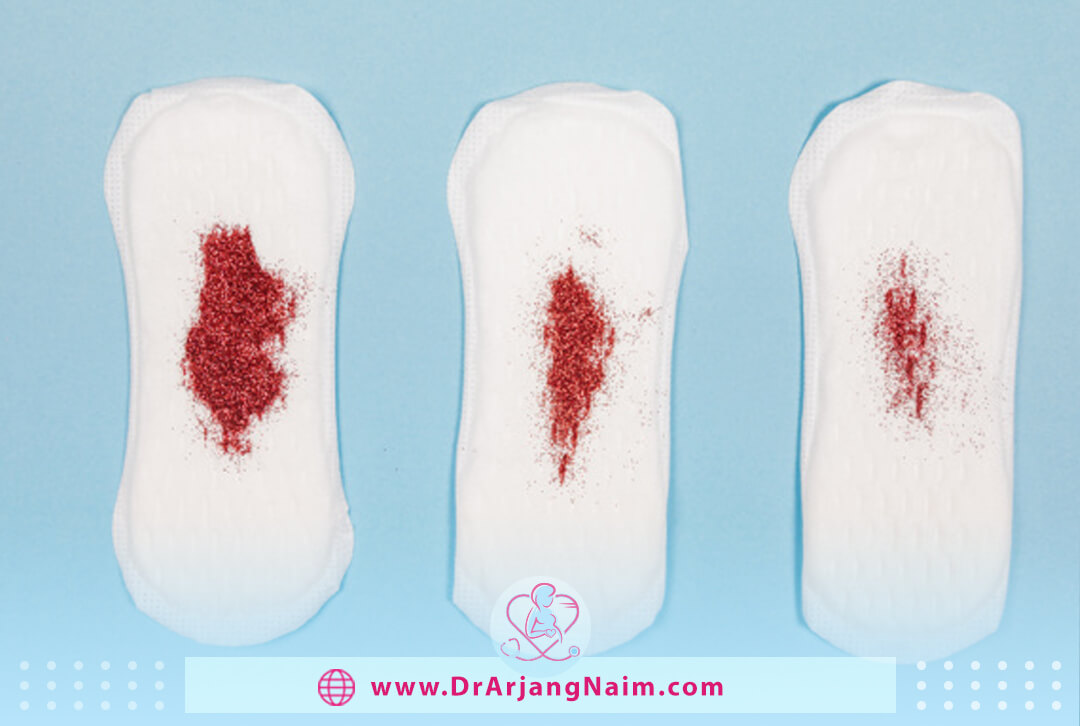Endometrial cancer is cancer that starts in the uterus. The uterus is a hollow, pear-shaped pelvic organ in which fetal growth occurs. Endometrial cancer occurs when abnormal cells develop in the uterus and begin to grow out of control. Endometrial cancer starts in the layer of cells that make up the lining of the uterus. This cancer is sometimes called uterine cancer. Other types of cancer can occur in the uterus, including uterine sarcoma, but are much less common than endometrial cancer.
Uterine cancer is often diagnosed early because it repeatedly causes abnormal bleeding from the vagina. If endometrial cancer is diagnosed early, removal of the uterus usually cures endometrial cancer. There are two main types of uterine cancer. Endometrial cancers start in the lining of the uterus (endometrium) and make up about 95% of cases. And uterine sarcomas, which develop in the muscle tissue (myometrium), are a rarer type of uterine cancer.
Types of uterine cancer
Types of cancer include:
- Endometrioid adenocarcinoma: The most common form of cancer is the uterus and endometrium. It forms in the endometrial glands, and its intensity varies.
- Uterine papillary serous carcinoma: This type of cancer is invasive and, at the same time, less common than cancer of the uterus and endometrium that develops in the lining of the uterus.
- Uterine clear cell carcinoma: The form is rarer, accounting for less than 5% of cases.
- Uterine carcinosarcoma: This is another rare but more aggressive case of uterine and endometrial cancer. It accounts for less than 5% of cases.
- Uterine sarcoma: Uterine sarcoma develops in the muscular wall of the uterus, also called the myometrium. Less than 10% of uterine cancers are uterine sarcomas. Uterine sarcomas are often more aggressive than other types of uterine cancer.
Symptoms

The most common symptom of endometrial cancer is abnormal vaginal bleeding, which includes:
- Changes in the length or heaviness of menstrual periods
- Vaginal bleeding or spotting between menstrual periods
- Vaginal bleeding after menopause
Other symptoms of endometrial cancer include:
- Watery or blood-tinged vaginal discharge
- Pain in the lower abdomen or pelvis
- Pain during sex
Abnormal vaginal bleeding is often caused by menopause or other non-cancerous diseases. But in some cases, it is a sign of uterine cancer or other types of gynecological cancer.
Causes
The exact causes of uterine cancer are not known. What is known is that something happens to cause changes (mutations) in the DNA of cells inside the endometrium of the uterus. This mutation turns normal and healthy cells into abnormal cells. Healthy cells grow and multiply at a set rate and eventually die at a certain time. Abnormal cells grow and multiply out of control and do not die at a certain time. Abnormally shrunk cells form a mass. Cancer cells invade nearby tissues and separate from the primary tumor and spread to other parts of the body (metastasize).
Risk factors
Some factors increase the risk of uterine cancer.
Changes in the balance of female hormones in the body
The ovaries produce the two main hormones estrogen and progesterone. Fluctuations in the balance of these hormones cause changes in the endometrium. A disease or condition that increases estrogen levels but does not increase progesterone levels in the body can increase the risk of endometrial cancer. An example is the irregular ovulation pattern that occurs in polycystic ovary syndrome, obesity, and diabetes. Taking postmenopausal hormones that contain estrogen but do not have progesterone increases the risk of endometrial cancer. A rare type of ovarian tumor that secretes estrogen can also increase the risk of uterine cancer.
More years of menstruation
The onset of menstruation at an early age, before age 12 or late menopause, increases the risk of uterine cancer. The longer the menstrual cycle, the more exposed the endometrium is to estrogen.
Never having been pregnant
If a woman has never been pregnant, she is more at risk for endometrial cancer than someone pregnant at least once.
Older age
The risk of developing this type of cancer increases with age. Endometrial cancer often occurs after menopause.
Obesity
Obesity increases the risk of uterine cancer because excess body fat changes the body’s hormonal balance.
Hormone therapy for breast cancer
Taking the hormone drug tamoxifen for breast cancer can increase the risk of uterine cancer. But the benefits of using this drug in the treatment of cancer outweigh the disadvantages.
An inherited colon cancer syndrome
Lynch syndrome, also called hereditary non-polyposis colorectal cancer (HNPCC), is a syndrome that increases the risk of colon cancer and other cancers, including endometrial cancer.
Stages
Over time, cancer can potentially spread from the uterus to other parts of the body, which is classified into four stages based on the rate of growth or spread:
- Stage one: Cancer only exists in the uterus.
- Stage Two: There is cancer in the uterus and cervix.
- Stage 3: Cancer has spread outside the uterus, but not to the extent of the rectum or bladder. It may be present in the fallopian tubes, ovaries, vagina, or adjacent lymph nodes.
- Stage 4: Cancer has spread beyond the pelvic area. It may be present in the bladder, rectum, or tissues and organs.
Once a person is diagnosed with endometrial cancer, the cancer stage affects treatment options and long-term prospects. It is easier to treat cancer in the early stages of the disease.
Diagnose

Tests and methods used to diagnose uterine cancer include the following:
- Examining the pelvis: During the pelvic exam, the doctor carefully examines the outside of the genitals and then inserts two fingers of one hand into the vagina and at the same time presses the other hand on the abdomen to feel the uterus and ovaries. Inserts a device called a speculum into the vagina. The speculum opens the vagina so that the doctor can look at the vagina and cervix for abnormalities.
- Using sound waves to create a picture of the uterus: The doctor uses vaginal ultrasound to check the thickness and tissue of the endometrium and help rule out other conditions. In this method, a device such as a wand (converter) is inserted into the vagina. The transducer uses sound waves to create an image of the uterus. This test helps the doctor check for abnormalities in the lining of the uterus.
- Using a scope to examine endometrium: During hysteroscopy, the doctor inserts a thin, flexible, clear tube (hysteroscope) into the uterus through the vagina and cervix. The lens on the hysteroscope allows the doctor to examine the inside of the uterus and endometrium.
- Removing a sample of tissue for testing: To get a sample of cells from inside the uterus, the person will have an endometrial biopsy, which involves removing tissue from the uterus lining for laboratory analysis. An endometrial biopsy may be performed in a doctor’s office and usually does not require anesthesia.
- Performing surgery to remove tissue for testing: If not enough tissue is obtained during the biopsy or the biopsy results are unknown, the person will probably undergo a procedure called dilation and curettage (D&C). During D&C, tissue from the uterus lining is scratched and examined under a microscope for cancer cells.
Treatments

There are several treatment options for endometrial cancer. The doctor’s recommended treatment plan depends on the type and stage of cancer and overall health.
Surgery
Endometrial cancer is often identified with a type of surgery known as a hysterectomy. During uterine surgery, the surgeon removes the uterus. The ovaries and fallopian tubes may also come out with the uterus. The surgeon also removes surrounding lymph nodes to find out if cancer has spread. If cancer has spread to other parts of the body, the surgeon may recommend additional surgery.
Radiation therapy
Radiation therapy uses high-energy rays to kill cancer cells. There are two types of radiation therapy used to treat uterine cancer:
- External beam radiation therapy: An external machine directs the beams of radiation from outside the body to the uterus.
- Internal radiation therapy: Radioactive materials are placed inside the body, in the vagina or uterus. This method is also known as brachytherapy.
The doctor may recommend one or both types of radiation therapy after surgery. Radiation therapy helps kill cancer cells that may remain after surgery. In rare cases, the doctor may recommend pre-surgery radiation therapy, which helps shrink tumors to make them easier to remove. If the patient is unable to have surgery due to other medical conditions or poor general health, the doctor may recommend radiation therapy as the main treatment.
Chemotherapy
Chemotherapy involves the administration of drugs that kill the cancer cells. Some types of chemotherapy involve a single medication, while others involve a combination of drugs. Depending on the patient’s chemotherapy, the drugs may be given in pill form or intravenously (IV). the doctor may recommend chemotherapy for uterine cancer that has spread to other parts of the body and may also recommend treatment for endometrial cancer that has returned after treatment.
Hormone therapy
Hormone therapy involves using hormones or hormone-blocking drugs to alter the body’s hormone levels, which can help reduce the growth of endometrial cancer cells. The doctor may recommend hormone therapy for stage III or stage IV endometrial cancer and may also recommend it for endometrial cancer that has returned after treatment. Hormone therapy is often combined with chemotherapy.
Emotional support
People often have difficulty managing the emotional and mental effects of living with cancer. Doctor may refer patients to an in-person or online support group for people with cancer. It may be easier for the patient to communicate with others who have similar experiences. Doctor may also refer the patient to a mental health professional for advice. Individual or group therapy may help the patient manage the psychological and social effects of living with cancer.
How can the risk of endometrial cancer be reduced?
Here are some strategies that may help reduce the risk of endometrial cancer:
- Manage weight
- Get regular exercise
- Discuss pros and cons of hormone therapy with the doctor
- Get treated for endometrial problems.
The bottom line
Endometrial cancer occurs when its cells change. If these changes are malignant and cannot be controlled, they will grow and multiply. If growth occurs, the cancer cells turn into cancerous and malignant tumors. Uterine cancer is one of the most dangerous cancers in women.
See your doctor if you have symptoms that could signify endometrial cancer or another gynecological condition. Early diagnosis and treatment will help improve your long-term vision.
Arjang Naim, MD, carefully examines the patient’s condition in case of cancer and performs the best treatment measures based on the patient’s condition.
Additional questions
- Does endometrial cancer spread quickly?
The most common type of endometrial cancer grows slowly. Often found only inside the uterus. Less common types grow faster and tend to spread to other parts of the body.
- What is the average age of endometrial cancer?
The average age of women diagnosed with endometrial cancer is 60 years. This cancer is uncommon in women under the age of 45. This cancer is more common in black women than in white women.
- What are the three most common side effects of chemotherapy?
- Nausea
- Vomiting
- Diarrhea
- What organ is most affected by chemotherapy?
The kidneys work to eliminate chemotherapy drugs as they move through the body. In this process, some kidney and bladder cells can be irritated or damaged.
- What does endometrial cancer discharge look like?
In some women, endometrial cancer can cause a thin, watery, or white discharge. Most women who bleed or discharge do not have cancer.
References
https://www.healthline.com/health/endometrial-cancer#takeaway
https://www.mayoclinic.org/diseases-conditions/endometrial-cancer/diagnosis-treatment/drc-20352466
https://www.webmd.com/cancer/understanding-endometrial-cancer-basics
https://www.cancer.org/cancer/endometrial-cancer/causes-risks-prevention/prevention.html
https://www.pennmedicine.org/cancer/types-of-cancer/uterine-cancer-and-endometrial-cancer




